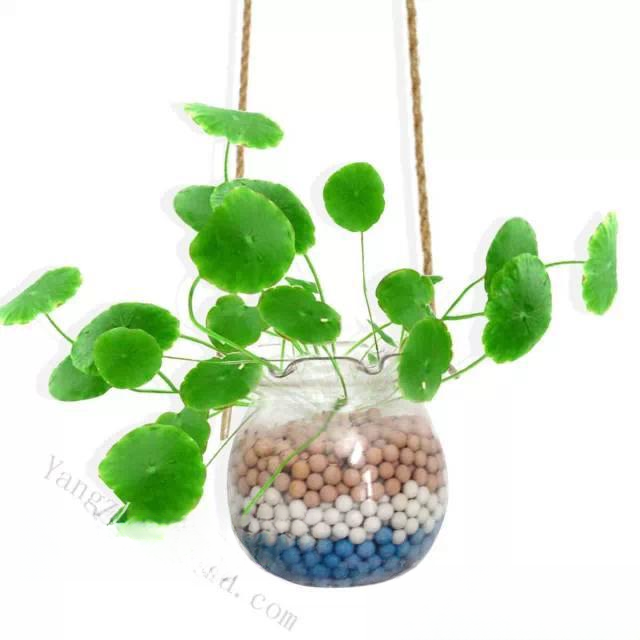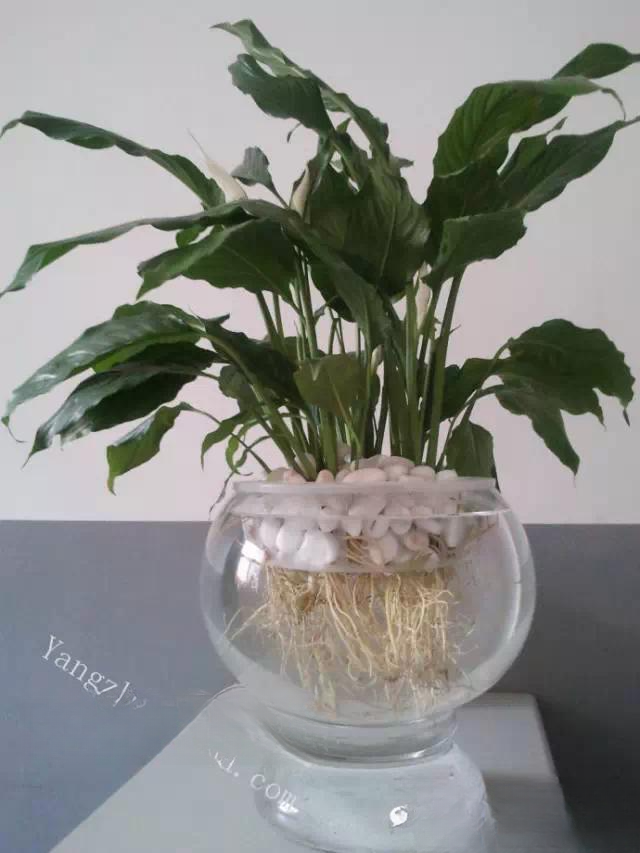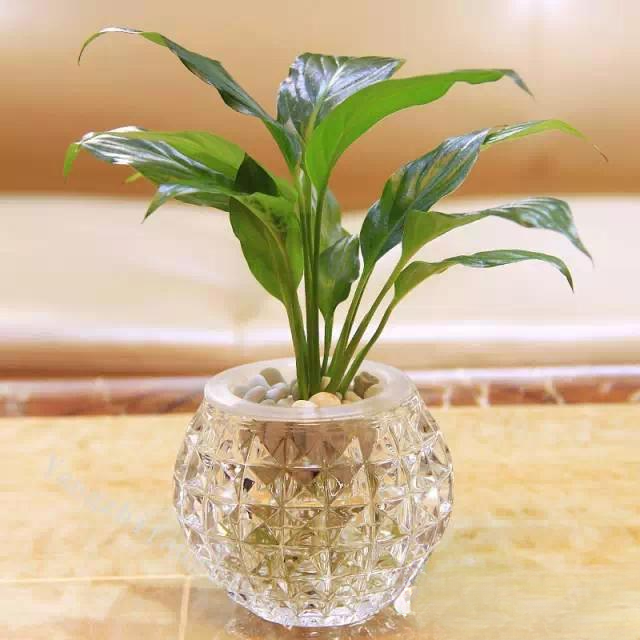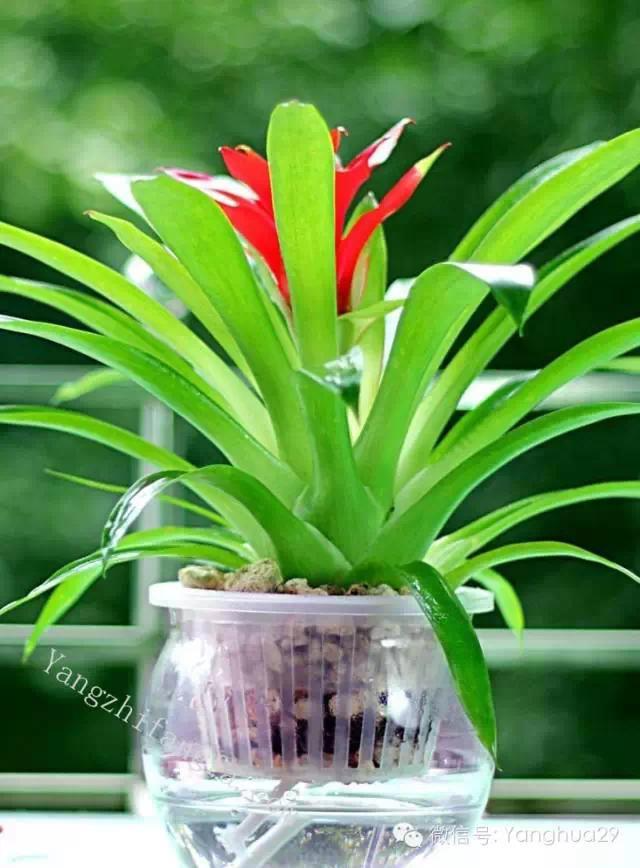Guidelines and precautions for changing water for hydroponic plants
The hydroponic flowers cultivated by this soilless cultivation technology have been favored by domestic and foreign flower consumers for their cleanliness, elegance, ornamental value, environmental protection and pollution-free.
But it is worth noting that the varieties and quality of hydroponic flowers produced in various countries around the world are not very ideal. The most fundamental reason for this is that hydroponic flowers are easily restricted by hypoxia and nutrient imbalance during their growth, which often leads to root rot, yellowing leaves and other poor growth phenomena in hydroponic flowers, and the water quality deteriorates, further affecting the growth of hydroponic flowers and their ornamental value. Therefore, in the process of hydroponic flower growth, solving the balanced supply of oxygen and nutrients in the nutrient solution is the most critical link.

1. Tips on changing water for hydroponic plants and precautions
1. When the temperature is around 20-25℃ (in spring and autumn), change the water every 10-15 days. If the temperature is low, the water change time can be appropriately extended, and if the temperature is high, it should be shortened.
2. When the temperature is below 10 degrees in winter and above 35 degrees in midsummer, the concentration of nutrient solution should be reduced (generally 1/3-1/2 of the normal level) or only clean water should be used for cultivation.
3. There should not be too much water in the bottle. It is best to have about 2/3 of the root length immersed in water.
4. When raising flower fish together, it is advisable to change the water frequently. It is best to buy a micro air pump with very low power consumption of about 3 watts. Proper inflation can greatly extend the water change time (generally, the water can be changed once every 1-2 months).
5. Tap water can be used, but it is best to leave it for one to two days. Mineral water or purified water can also be used directly. The temperature difference between the original water and the new water should not be too large. 6ML bagged nutrient solution is added to the clean water in a 2.25L large Coke bottle before use. 300ML bottled nutrient solution is added to the clean water in a 2.25L large Coke bottle after each bottle cap. The shelf life of the diluted nutrient water is 6 months. It should be stored away from sunlight.
6. Due to the adsorption, metabolism and algae activities of the roots, foreign matter will be covered on the surface of the roots after a period of time. You can carefully rinse and clean them with water when changing the water. If there are old and dead roots, they should be removed when changing the water.

2. Water changing method and daily maintenance guide for hydroponic flowers
1. Change the water regularly, and change the water when the water in the hydroponic container becomes slightly turbid. Generally, change the water every 10 to 15 days in spring and autumn; every 5 days in summer; and every 30 days in winter.
2. Every time you change the water, first wash the roots of the hydroponic flowers and the hydroponic container with clean water, wipe the dust on the leaves with a damp cloth, keep the leaves clean, and trim the dead branches, rotten leaves and roots.
3. When changing the water, add 4 bottle caps of hydroponic nutrient solution for every liter of clean water (cold boiled water, mountain spring water, magnetized water, etc. are preferred. If tap water is used, it needs to be clarified for more than 6 hours), and shake well before use for hydroponic flowers.
4. When adding water, no more than 1/2 of the flower roots should be immersed in the water, and the remaining roots should remain in the air of the hydroponic container, and the roots should be kept drooping naturally as much as possible; you can shake the water in the hydroponic container from time to time in the future.
5. Pay attention to ventilation and place the flowers in a place with a certain air humidity. If the air humidity is not enough, spray mist water into the air to increase the air humidity. Usually, you can spray a small amount of mist water on the leaves, or wipe the leaves of the flowers with a wet cloth to keep the leaves clean and dust-free.

6. Hydroponic flowers can generally be placed in indoor environments such as offices, conference rooms, halls, coffee tables, next to computers, kitchens, bedrooms, living rooms, and bathrooms. When placing them, try to place them in places with sufficient sunlight (i.e. sunny places with more scattered light), but avoid direct sunlight and cold wind.
7. The indoor temperature should be controlled between 8℃ and 30℃. If the temperature is too high, you can use air conditioning, water spraying, water curtain cooling and other means to appropriately cool down, and at the same time, you must strengthen ventilation; in winter, you should pay attention to heat preservation, often receive scattered light or direct sunlight. If you encounter extremely low temperatures, you can use a heater to increase the ambient temperature. You can also use a thicker transparent plastic bag to cover the hydroponic flowers from top to bottom, and open 3 to 4 holes in the plastic bag to facilitate ventilation and prevent cold wind.
8. If you find rotten roots in hydroponic flowers, you should remove them immediately. First, use clean pruning shears to cut off the rotten roots from the base at one time; then disinfect the roots with 0.5% potassium permanganate for 10 minutes, and rinse them with clean water. Then use clean water (or magnetized water) to fix the suspended water in the planting basket for 7 to 15 days, and change the water every two days. After new aquatic roots grow, you can add an appropriate amount of nutrient solution for normal hydroponic cultivation.
9. If conditions permit, you can also add 1% hydrogen peroxide (i.e. 3% hydrogen peroxide) or 0.1% potassium permanganate to the hydroponic nutrient solution to facilitate the release of oxygen or inhibit the growth of harmful bacteria and algae in the water; of course, you can also add a small amount of microbial fertilizer or activated carbon to the hydroponic nutrient solution to improve the water quality and make it more conducive to plant root absorption.

3. Water changing methods and steps for hydroponic plants
Hydroponic plants are becoming more and more popular nowadays, but water is different from soil after all. Potted flowers only need to change the soil once a year, but for hydroponic flowers, the water must be changed frequently. Changing water is an important task for hydroponic plants. If the water is not changed for a long time, the dissolved oxygen content in the water will decrease, which will affect the growth and absorption capacity of the root system. In addition, the plants will excrete some harmful substances during physiological activities. When the water is lacking in oxygen and the content of harmful substances is high, it will cause the plants to grow poorly or even die. The following introduces the time and method of changing water for hydroponic plants.
Step 1: Water change time
Generally, it is advisable to change water every 5-7 days. However, water change depends on the season. For newly hydroponically cultivated flowers, water change is required every 1-2 days. In summer, plants grow vigorously, the temperature is high, and water is easy to deteriorate, so the time should be shortened. In winter, most plants are in a semi-dormant or dormant state, the temperature is low, and the water change interval can be longer. In general, a shorter time interval for water change is beneficial to plant growth.
Step 2: Cleaning the roots and containers
When changing the water, the root system should be cleaned, and the mucus on the root system can be washed off with clean water, and some rotten roots and old roots that have lost their absorption capacity should be cut off. After the container has been used for a period of time, sediment will adhere to the wall of the container, and it is also easy to grow moss, so it should also be cleaned when changing the water.
Step 3: Water Depth
When growing flowers hydroponically, the roots are often immersed in water. However, based on cultivation experience, not too much water should be added, but a small amount of roots should be exposed to the air. This way, the roots can absorb dissolved oxygen in the water as well as oxygen from the air.
----------------------------------------------------
Flower cultivation knowledge
WeChat: yanghua29
Exchange knowledge on flower cultivation, provide the most comprehensive flower knowledge, professional flower cultivation techniques, and comprehensively solve flower cultivation problems!